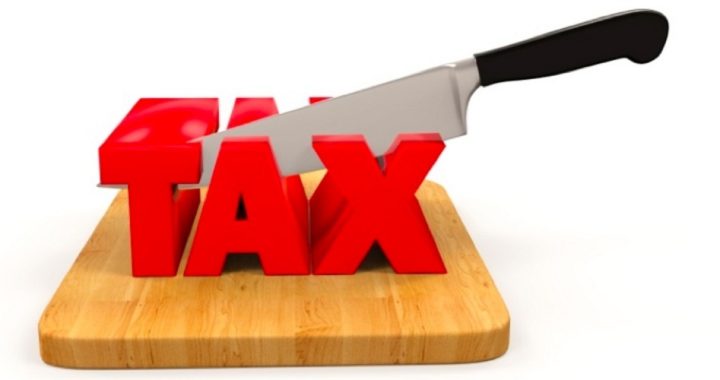
Removing the noise and the histrionics from Monday night’s presidential debate, there is a clear division between the two major-party candidates on the state of the economy and what to do about it.
The Democrat candidate said that the economy is on the mend, that jobs are being created, that real incomes have just recently increased, and that the outlook for the economy is sanguine.
The Republican candidate held the opposite view: after seven years the economy is still struggling, the recovery is the weakest in recent memory, and the outlook is bleak.
The Wall Street Journal noted that Trump’s case is the stronger, with median household real (inflation-adjusted) incomes currently below where they were in 2007, before the start of the Great Recession. Homeownership “has fallen to a 50-year low, and a large swath of Americans now say they worry [that] their children won’t [have] the same opportunities for upward mobility that they did.”
Donald Lambro, chief political correspondent for the Washington Times, noted that the economy “is barely growing … business investment is softening, productivity is down as are factory orders. The real honest-to-goodness unemployment rate is at 10 percent [and] most Americans tell pollsters that the economy and jobs remain their top concern.”
Confirming that dismal outlook is the regional survey of business activity published last month by the Richmond Federal Reserve. Encompassing business activity in Virginia, North Carolina, and Maryland, the survey concluded:
Overall, manufacturing activity declined in August, with the composite index dropping to a reading of -11, following last month’s reading of 10. The indicators for shipments and new orders decreased sharply this month. The index for shipments lost 21 points, ending at a reading of -14, while the index for new orders fell 35 points to -20. In addition, the index for order backlogs fell to a reading of -21, following last month’s reading of 1….
Capacity utilization weakened in August, the index lost 22 points to end at a reading of -19…. Finished goods inventories rose across more firms compared to a month ago, that index moved up nine points, ending at a reading of 24. Growth in raw materials inventories continued in August, with that index adding four points to end the survey period at 27.
In other words, the economy in that vital part of the country is close to recession: shipments are slowing, resulting in inventories piling up. New orders are down and as a result so is employment.
One of the solutions offered by Donald Trump is a massive cut in the corporate income tax rate, now the highest in the world. He would cut it from 35 percent to just 15 percent, claiming that the resulting stimulus to the economy would be “a beautiful thing” to watch.
At present, the 35-percent rate puts American companies at a distinct disadvantage, according to the Tax Foundation, which estimated that it costs American companies $140 billion a year just to remain in compliance with the complex rules. Boston University Professor Laurence Kotlikoff thinks that the “dead weight loss” of those compliance costs is much higher, closer to $400 billion annually.
Trump’s cut would invite companies holding cash abroad to seriously consider repatriating it which would, in the words of Terry Jones, writing for Investors Business Daily, “lead to an enormous jump in job creation — yes, Reagan-like job creation.”
But would it? Would a cut in corporate tax rates by a full 20-percentage points have an impact? And how widespread would that impact be? After all, corporate America, despite common perception, pays no income tax (or anything else for that matter) without passing it onto its customers (in the form of higher prices) and even its workers (in the form of lower wages). The corporate income tax is real all right; it’s just paid by everyone else.
The best answer is to look at history. During the John F. Kennedy administartion income tax rate cuts resuscitated a moribund economy, just as they did under Ronald Reagan. But history has failed to record adequately what happened when Bill Clinton cut the capital gains tax (remember Clintonomics?) from 28 percent to 20 percent in the highest bracket, and from 15 percent to 10 percent in the lowest: real (inflation-adjusted) Gross Domestic Product (GDP) per person grew from $38,000 in 1994 to $45,000 in 2001. At the same time, the country’s national debt fell as a percent of output by a full 10 percentage points, from 66 percent to 56 percent.
This is just as Arthur Laffer said it would. Although evidence supporting the economic principle behind the so-called Laffer Curve predated Mr. Laffer by centuries, the strategy was named after him when he proposed it back in 1974.
The concept is simple. If the tax rate is zero, the government will receive no revenue. If the tax rate is 100 percent, the government won’t receive any revenue either because no one would produce. Somewhere in between is the “right” or “correct” rate to maximize government revenues. Under Clinton that “proper” rate was closer to 20 percent than 28 percent.
Unfortunately economic ignorance feeds perceptions that corporate giants are ripping off the American consumer abound and Mr. Trump, if he becomes the next president, is going to have his hands full persuading Congress to “pull a Reagan” and cut those corporate tax rates. The best thing he could do is spend more time on the campaign trail explaining to the American people the economic fundamentals of cutting taxes and how they would improve the economy, raise wages and reduce the national debt. Once in office he could then direct his attention to Congress in an effort to reduce their economic ignorance as well.
A graduate of an Ivy League school and a former investment advisor, Bob is a regular contributor to The New American magazine and blogs frequently at LightFromTheRight.com, primarily on economics and politics. He can be reached at [email protected].



